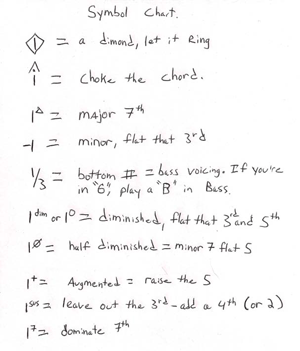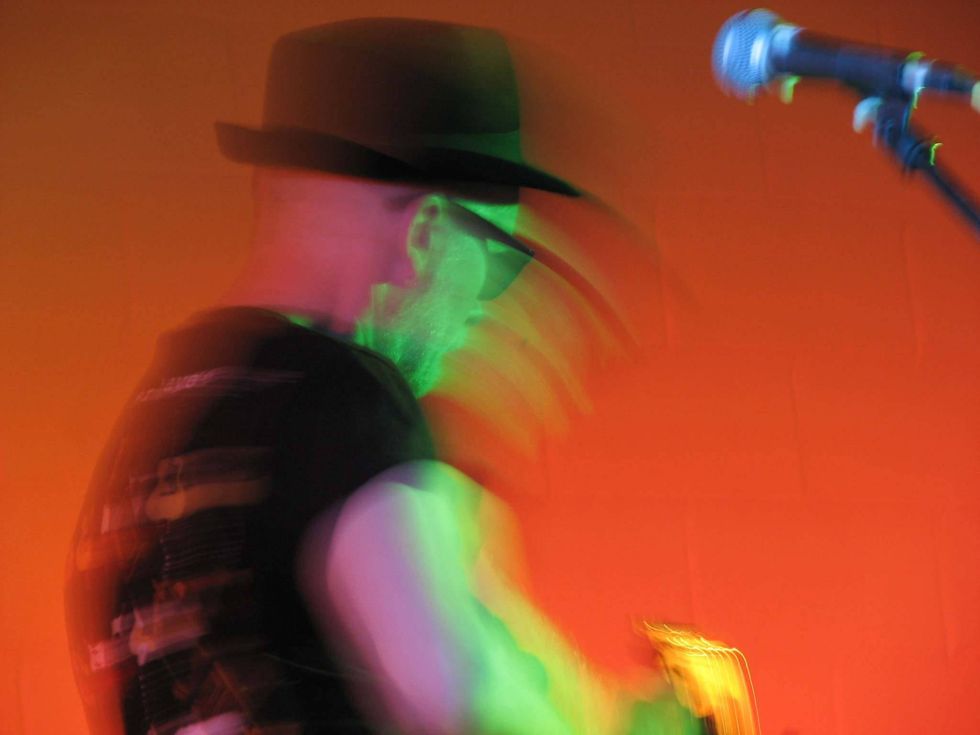I did a session a little while ago with a guest keyboard player who had painstakingly transcribed every note he planned on playing. He was über-prepared but regrettably misguided, because once the singer decided he wanted to try the song up a half step, this guy was screwed. When I handed him a number chart, he looked like he was going to sob, pee his pants, and then hide. The poor bastard was an egghead who knew a lot about music but never took the time to learn the down-and-dirty stuff that working musicians use every day: the Nashville Number System.
Literally, everybody working a decent gig in Nashville reads number charts—including every good engineer and drummer, even though they're not playing notes, per se. It's a brilliant system that allows players to change keys to accommodate any moody singer immediately. They can be written quickly and sight-read easily after a bit of practice. Much like chord charts, they don't give you the melody, but you can write out simple signature parts in numbers. For those who haven't yet learned the Nashville Number System, I present to you the keys to the kingdom.
Everybody writes charts a bit differently. Mine tend to be sloppy, but they all have the same basic format. In short, a line is usually four to eight measures. Each number denotes the scale degree of your key signature. All standard symbols for music apply.
 FIGURE 1. An example of an eight-bar progression written with the Nashville Number |
In Figure 1, the upper right-hand corner (the circled “G" that looks a lot like a “6") tells us that we're playing a waltz (that is, in ¾ time) in the key of G. That means G is our 1. Measure one is a G. Measure two is a straight G for the first two beats, then a G with a B (3) in the bass on the last note of the measure, leading us into the C (4) chord for measure three. Play a straight C (4) for the first two beats, then play the G (1) over B (3) as a passing chord to A (2) minor for the fourth measure. Play a D (5) Major 7th for measure 5, then a straight D for the first beat of measure six. Play two beats on a D (5) with an F# (7) in the bass for the rest of measure six, then resolve back to our G, strumming three quarters for the 7th measure and hit a single whole note strum for the eighth measure. Then follow those repeat signs and do it again.
If your singer wants to modulate to A, the A is now your 1, D is your new 4, etc. It's amazing how much information you can convey with just a few numbers and symbols. Figure 2 shows a list of a few symbols that you will eventually see in Nashville Number System Charts. Next time you're recording or learning a song, write a number chart. Eventually, you'll be able to read them without thinking so you can get down to just playing.
FIGURE 2.
Common Nashville Number System symbols.
John Bohlinger
John Bohlinger is a Nashville guitar slinger who works primarily in television, and has recorded and toured with over 30 major label artists. His songs and playing can be heard in major motion pictures, major label releases and literally hundreds of television drops. Visit him at: youtube.com/user/johnbohlinger or facebook.com/johnbohlinger




















